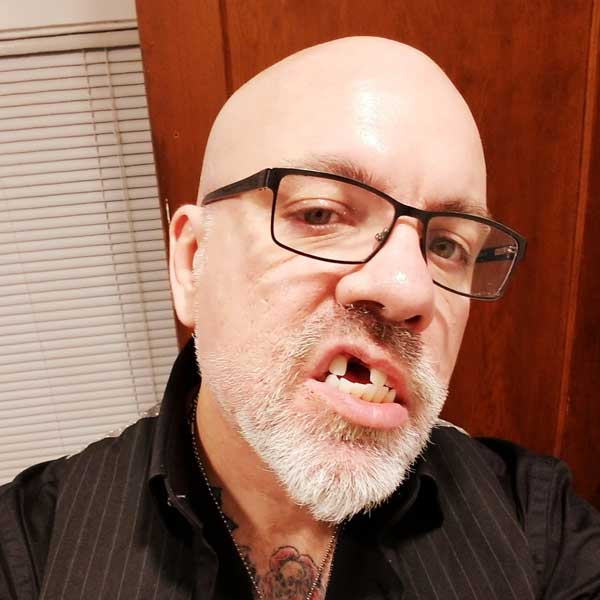Canada needed Helix. The 1980’s glam metal craze was going full-tilt, raging across the US and bulldozing through Europe. Hair was growing at an alarming rate everywhere, teenagers dropping out of society and joining the spandex rodeo en masse. There was no way to stop it. The party had started and it would not end until the whole world succumbed to Hollywood’s throbbing, leather-bound, all-knobs-to-the-right fever dream. And Canada was just sitting there in its faded blue denim and its workboots, chugging Labatts Blue and listening to old Max Webster records, left to play hockey and shovel snow while everybody was out getting arrested or pregnant on wild rock'n'roll sprees.
It had fitfully tried to produce its own homegrown glam-stars before and after Helix, but the alchemy was always off, somehow. Lips from Anvil played guitar solos with a dildo and wore bondage gear but the band was strictly hardcore-heavy, impenetrable to glitter kids, not a power-ballad in sight. Lee Aaron, the “metal queen”, was glamorous and had a Canadian hard-rock supergroup behind her, but calling anything she did metal was a stretch. Killer Dwarfs? Too short, obviously. Thor? Probably the best ever Canadian rock star now and forever, but he was more about feats of strength than shredding solos or pulling sexy rock'n'roll shapes.
In reality, the Canadian “sound” was AOR, unchanged and unwavering since the mid-70s. See April Wine, Loverboy, Headpins, Honeymoon Suite, Coney Hatch, Brighton Rock, etc. Helix themselves started that way back in ’74 and saw no reason to upgrade until the early 80s. That’s the way Canadians liked it, man. Melodic, hooky, sorta-heavy-but-nothing-crazy. Polite Metal. But by 1983, the year that metal truly broke worldwide, AOR just wasn’t enough. Canada needed its own glam metal metal heroes to get on the hard rock map. And it turns out they already had them, all along.
Helix formed in the mid-70s in Kitchener, Ontario. Originally a bunch of top 40 goofs with a tuxedo-wearing bass player, the band underwent a dizzying amount of line-up changes during its formative years. Legend has it that future Marty McFly Michael J Fox once auditioned to replace the tuxedo dude. But the stabilising force throughout these tumultuous years was always singer Brian Vollmer. He is the last man standing from the original line-up and while many helped to shape the Helix sound, he is the chief architect.
After a few bumpy years on the club circuit, the band finally hit the studio. Unable to score the elusive deal, they self-released their first two albums. The second, 1981’s White Lace And Black Leather, was the first glimpse of heavy metal glories to come. It is a minor masterpiece of pre-metal, street-wise and raw while still pledging allegiance to its melodic Canuck-rock roots. It’s one of a small handful of metal albums released in 1981 that showed a glimpse of the future. Not as influential as, say, Motley Crue’s Too Fast for Love or Hanoi Rocks’ Bangkok Shocks, but certainly one of the pioneering 80’s glam metal records, for sure.
In 1983, the chronically label-less band finally scored a record deal with Capitol, who scrubbed-up their 70’s rocker image into something a little more Sunset Strippy. The band released their pivotal No Rest For The Wicked album that year, which including the sorta-pandering but mostly stupid-awesome single Heavy Metal Love.
And so it was that Canada finally entered the glam metal sweepstakes. And not only did Helix trade in their faded denim for black leather, they even threw in a few druggy band members for bonus high-stakes rock’n’roll drama. In 1984, they unloosed their next (and biggest) album, Walking The Razor’s Edge, which featured the legitimately classic glam hit Rock You. They sold millions of records, and toured with everybody from Kiss to Motley Crue. People sorta forget about Helix whenever the glam years are discussed, but they were right there in the mix, man.
Like most flash metal bands, they endured lean years during the grunge era. Longtime Helix guitarist Paul Hackman tragically died in a van accident while the band was on a Canadian tour in 1992. The following year Vollmer released a solo album under the Helix name, which did him no favours with the Helix faithful.
Keeping a stable line-up proved impossible after Hackman’s passing, and Helix’s roster became a crazy jumble of faded Canadian glam-rockers, with members of Killer Dwarfs, Harem Scarem, and Brighton Rock marching in and out at a dizzying pace. But through it all Vollmer endured. The band is still together after almost 50 years and while they may have peaked in 1984, they retain a healthy following at home. Taking a cue from Twisted Sister, in the past few years they’ve done Xmas tours throughout Canada, playing their hits as well as metallicised holiday classics. Not the most glorious of endings, but a suitably Canadian one, at least.
Helix play alongside Warrant and Quiet Riot at the Casino Rama resort in Ontario on April 22. Tickets are on sale now.

